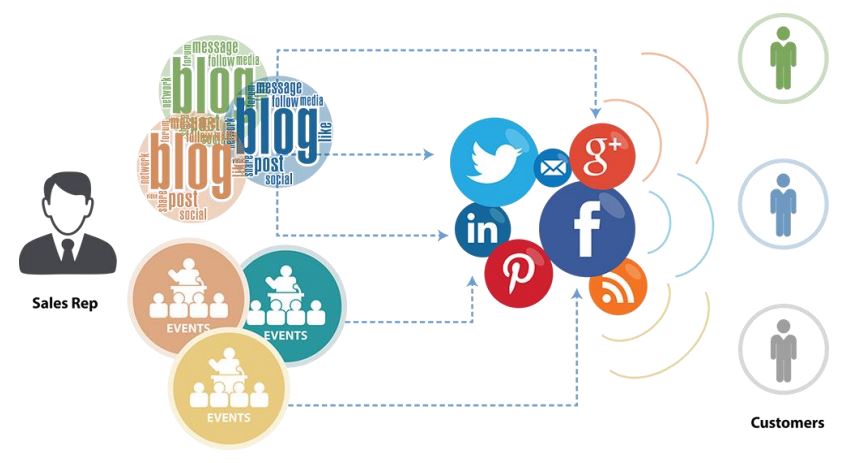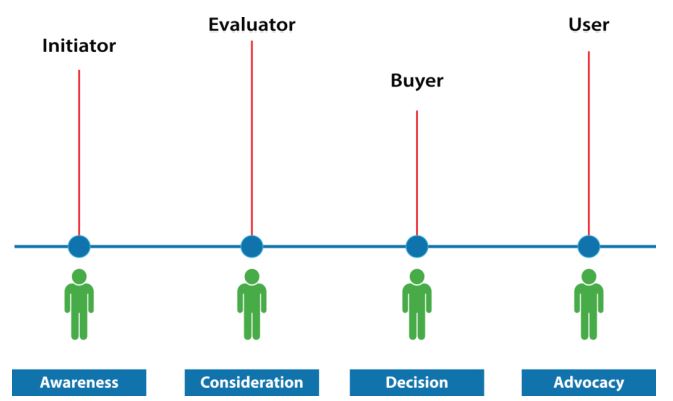
“Social selling” is certainly a red-hot buzzword but it is also one of the most difficult cultural changes to attain in a company. So often we have training and expectations and then sales people go right back to the way they have always done things.
That’s why I was so pleased to see some real research come out on this topic from Dr. Ari Lightman of Carnegie Mellon University. The work was sponsored by Dell and can be found in its entirety here.
Here are some big take-aways from one of the first real academic views of social selling.
Social selling best practices
Interviews with social selling rockstars revealed these best practices:
- Know your prospects on social media. Transition events can trigger selling opportunities.
- Build social credibility by focusing on relationships.
- Do your social homework. Don’t just follow individuals. Follow companies for relevant organizational news.
- Go beyond the digital divide. Look for social media updates that prompt opportunities for human contact.
- Cold calling — Don’t do it. It fails 97 percent of the time and with social selling there is no need for that any more.
Content as sales catalyst
Strategic and consistent content is providing a competitive advantage for sales organizations. CMU found that 72 percent of B2B buyers actively use social media to build relationships and gather information on a company and products.
However, publishing content consistently is not a catalyst for engagement. Engagement is driven by subjects that capture the attention of the target audience.
Content trends include gamified user engagement, data-driven content, internal links to content, product-specific blogs, and gated premium content.
Another trend is re-publishing “social proof” articles from other media sites on the company blog.
B2B buyers seem to appreciate high quality images. The research showed that posts with high quality images received 200 percent more engagement on LinkedIn.
Developing buyer personas aid many social selling efforts but they must be adjusted on an on-going basis to reflect changing business dynamics and the stage of the decision process.

Measuring social sales success
Although actual SALES is what we are all after, companies are also using a variety of leading indicators of progress:
- Number of community members and engagement
- Percentage of support calls saved
- Number of visits to rep pages/profiles
- Product/company mentions across social channels
- Number of new seller connections and contacts
Which social platforms matter most?
The research found that two different platforms had the most impact on purchasing professionals. LinkedIn was named as the most important platform among purchasing executives and company blogs was listed as the most important among non-executive professionals. Some of the interesting findings:
- 40 percent of purchasing professionals use LinkedIn before ever contacting a company.
- A warm referral through LinkedIn increases sales success between 200 and 400 percent.
- While LinkedIn was seen as the most popular platform by both purchasing and sales professionals, sales people name Twitter as the second-most important platform due to the real-time conversations and opportunity for rapid conversations and responses.
- Companies who integrate Twitter into their sales efforts find twice as many leads as those who don’t.
- Facebook is seen as a convenient one-stop shop to access highly-segmented consumer groups, launch marketing campaigns, and advertise.
- Slideshare is becoming increasingly popular to share product presentation decks.
- Spiceworks is a growing platform to share information on IT-related products.
Organizing for success
The best social selling organizations are cross-functional and collaborative. For example, the product manager has the latest information on product developments. An engineer will know how the product works. Marketing communications people can integrate materials and provide creative treatments. The social media team will know how to adjust the content for various platforms.
The best organizations have a process to create high quality content and track its progress and success.
To view the original article Click Here

No comments:
Post a Comment